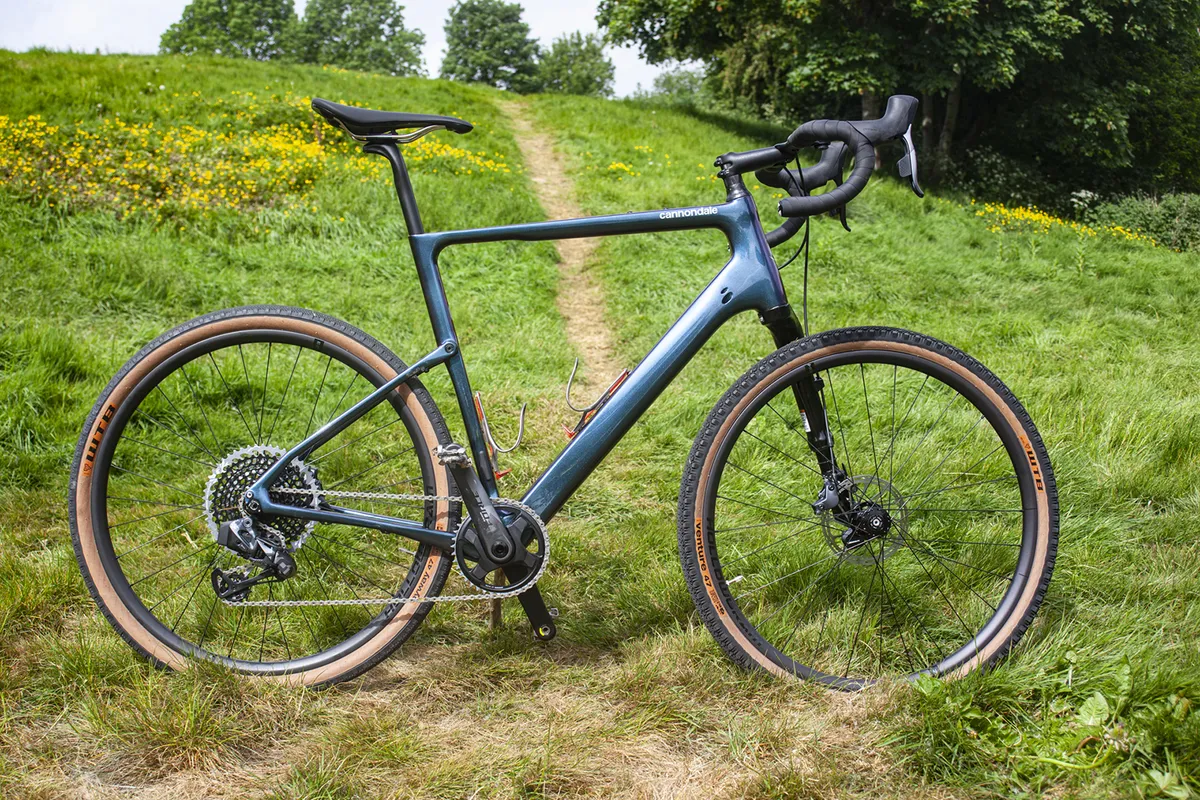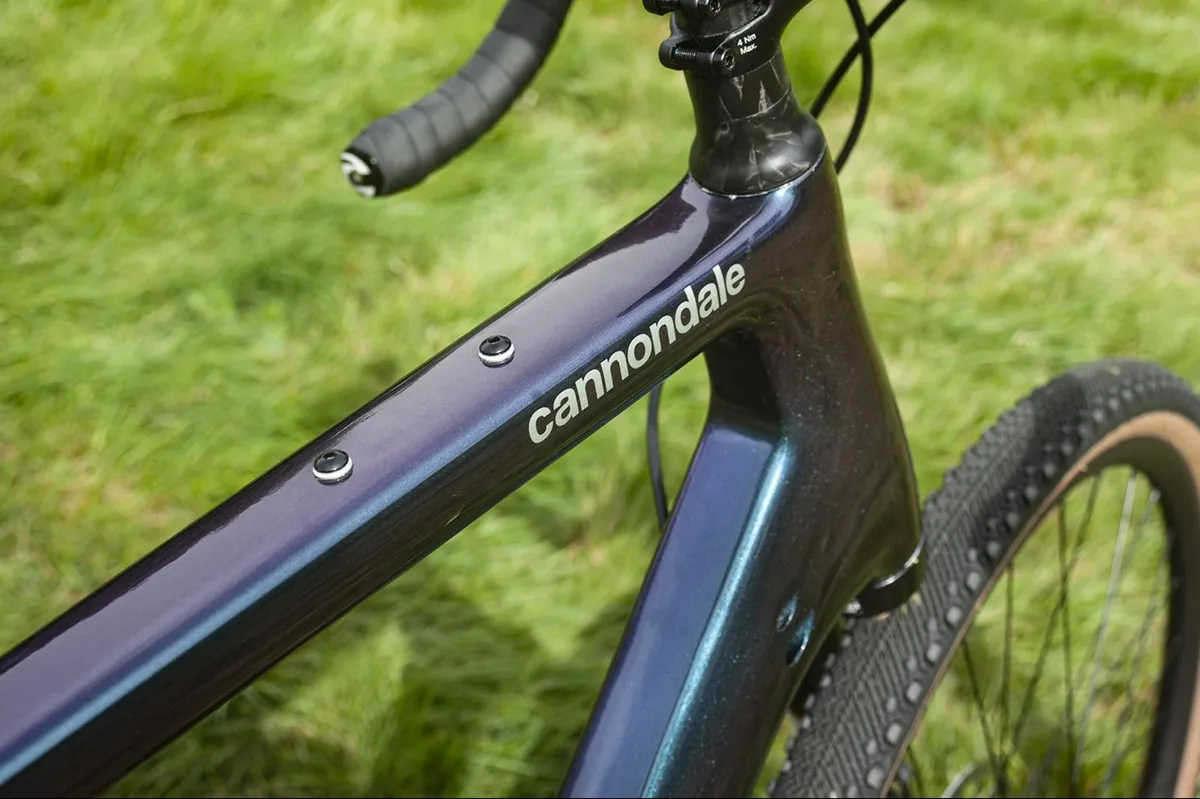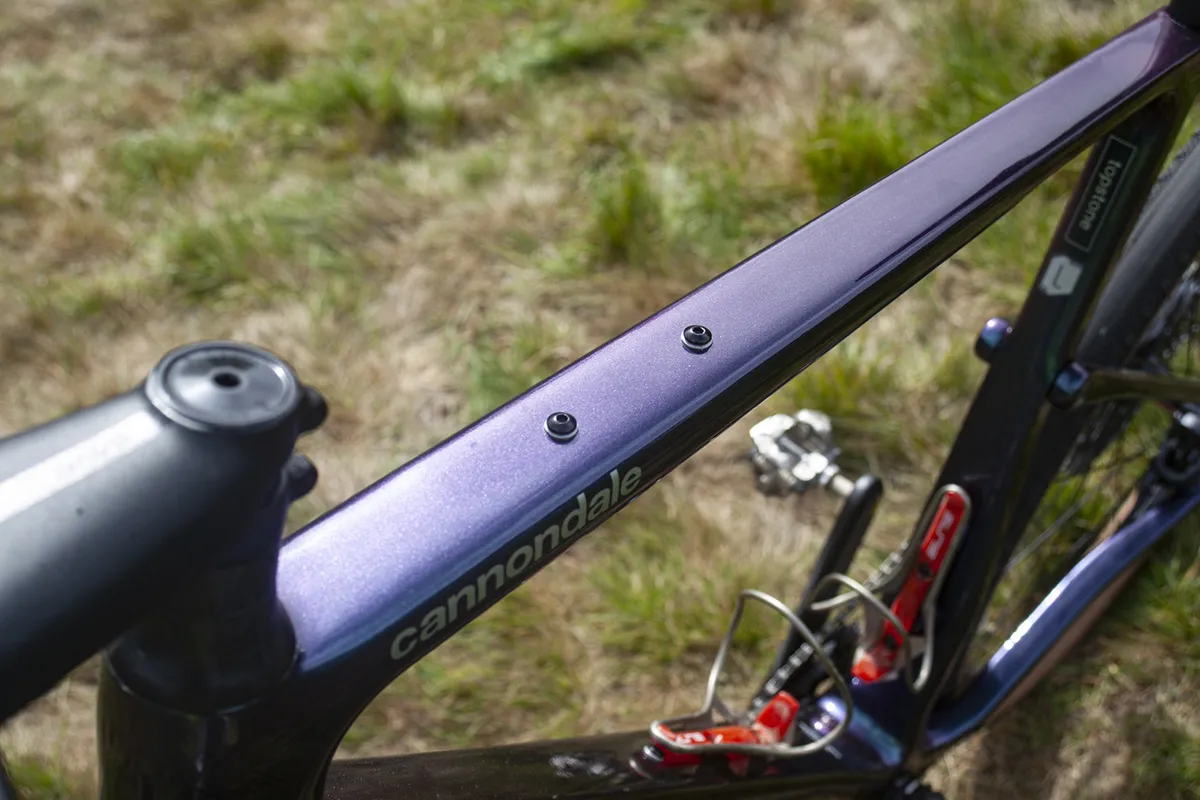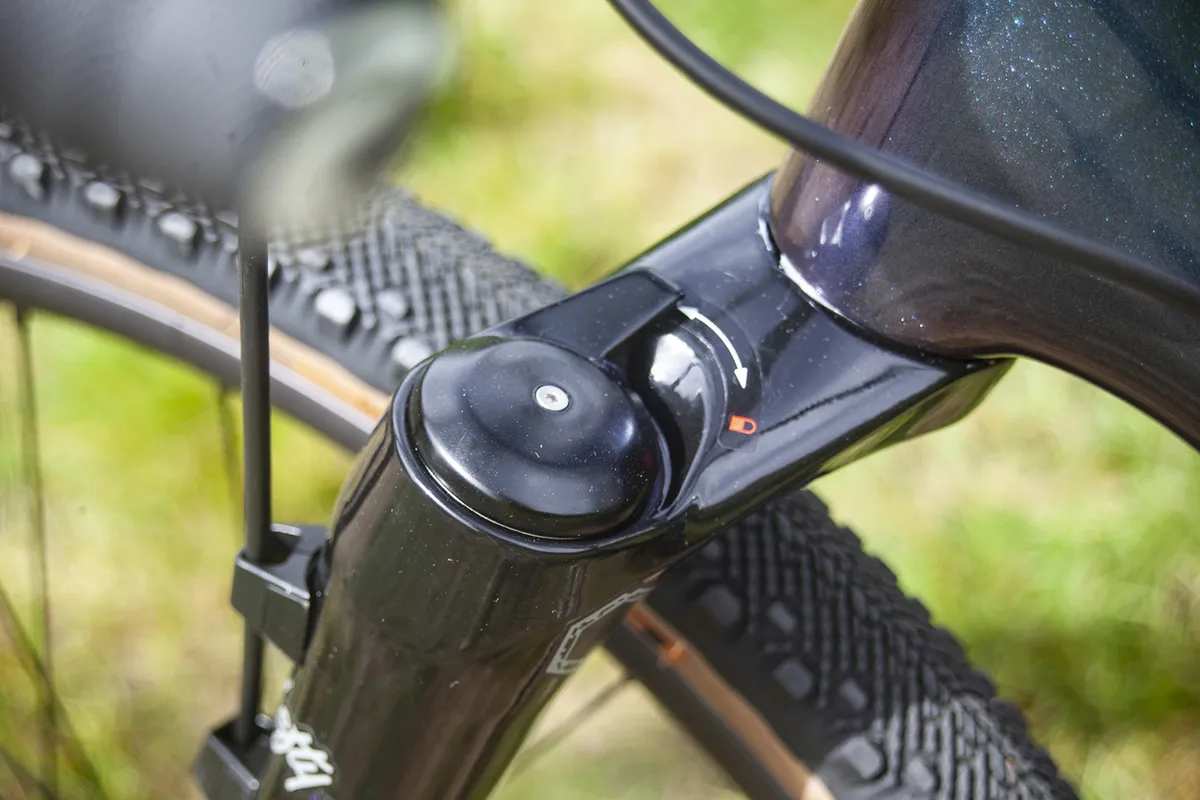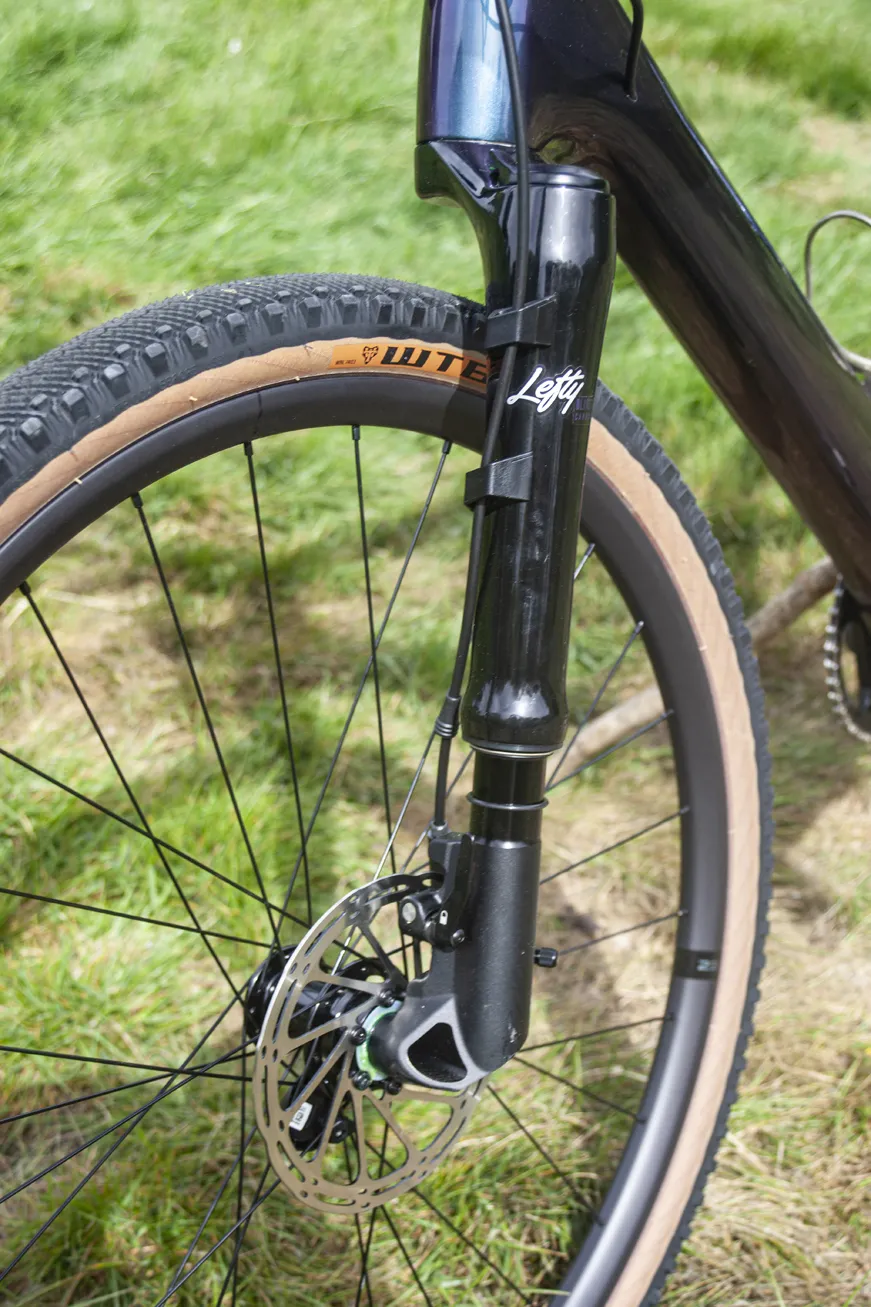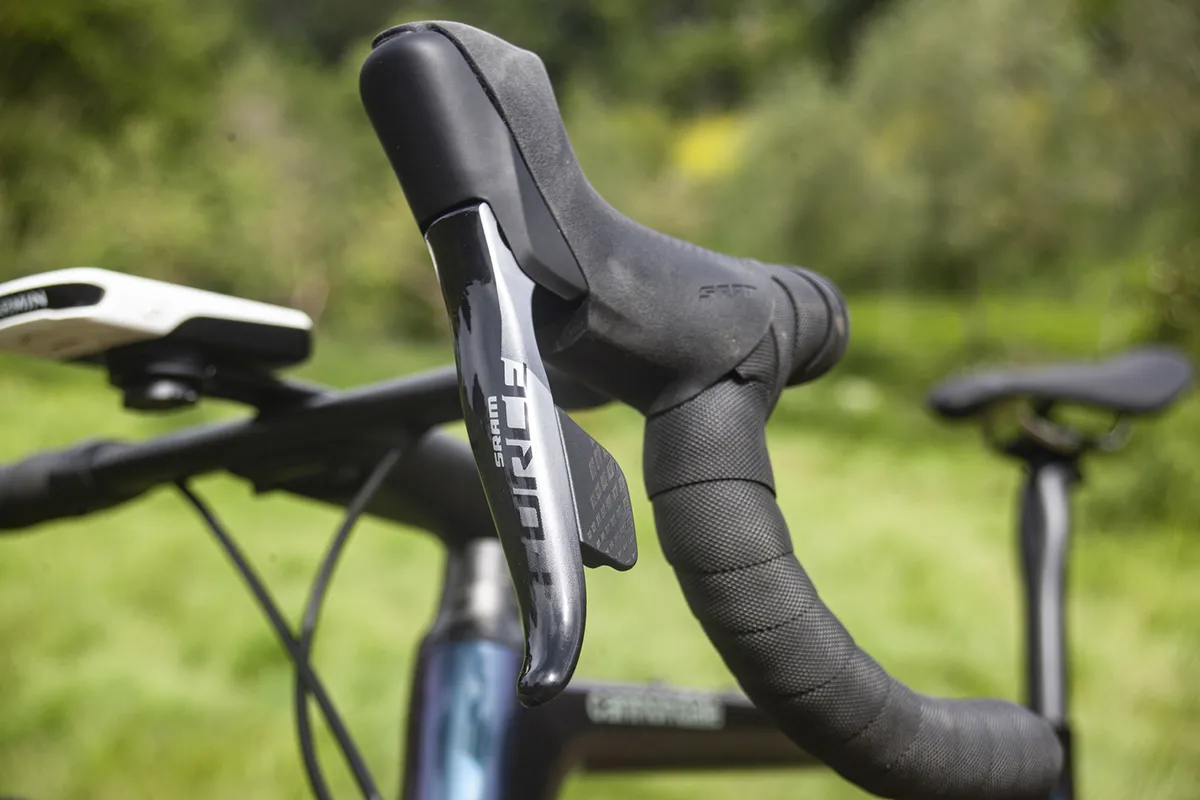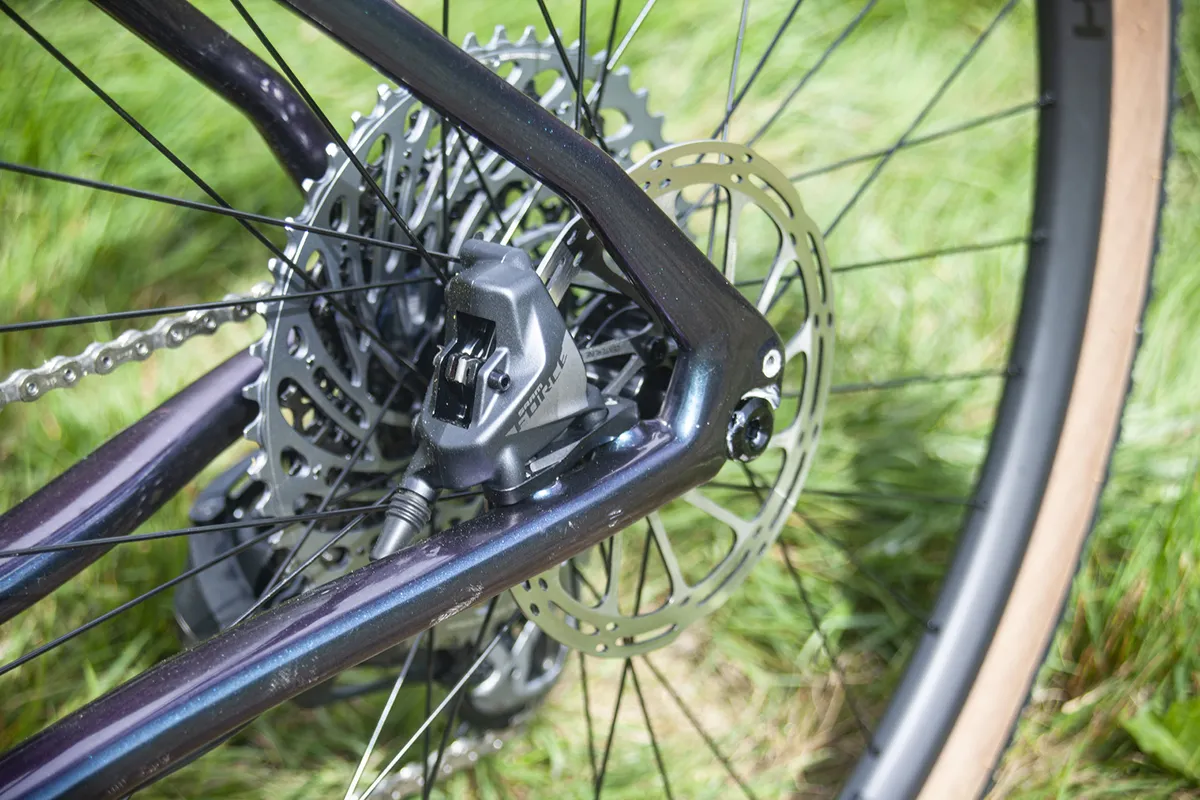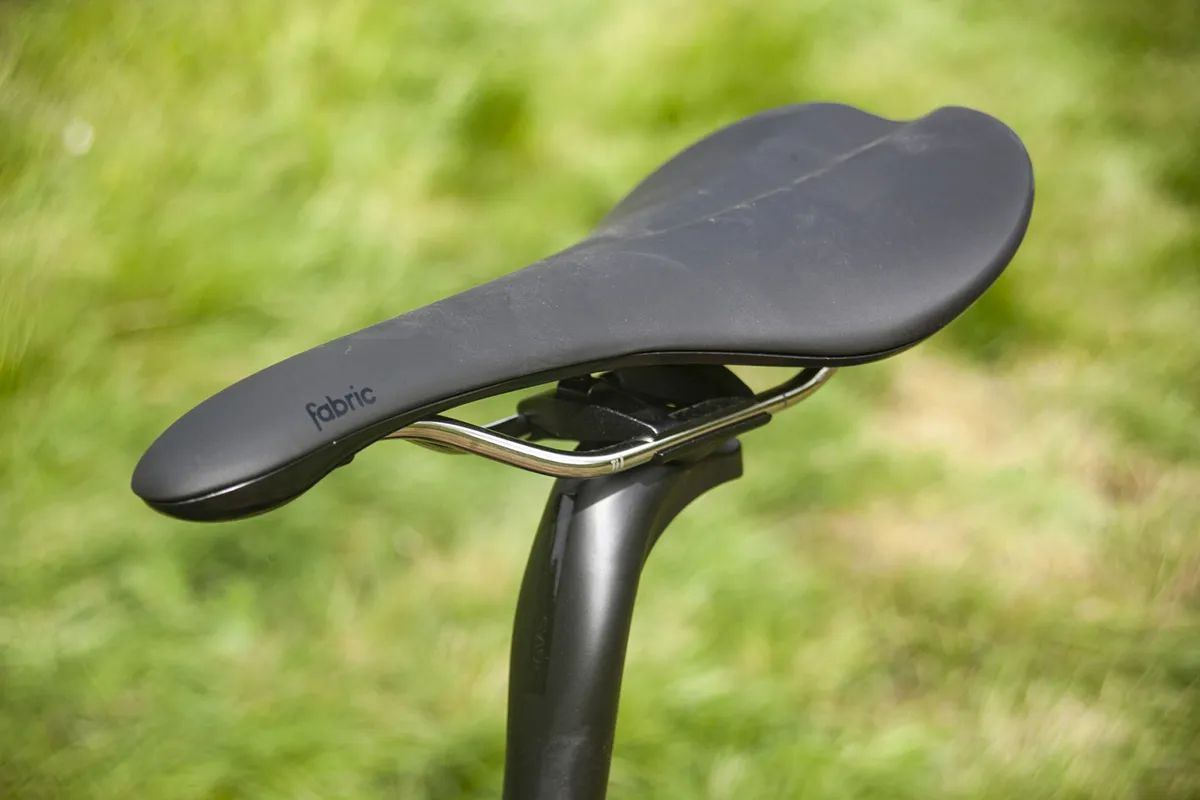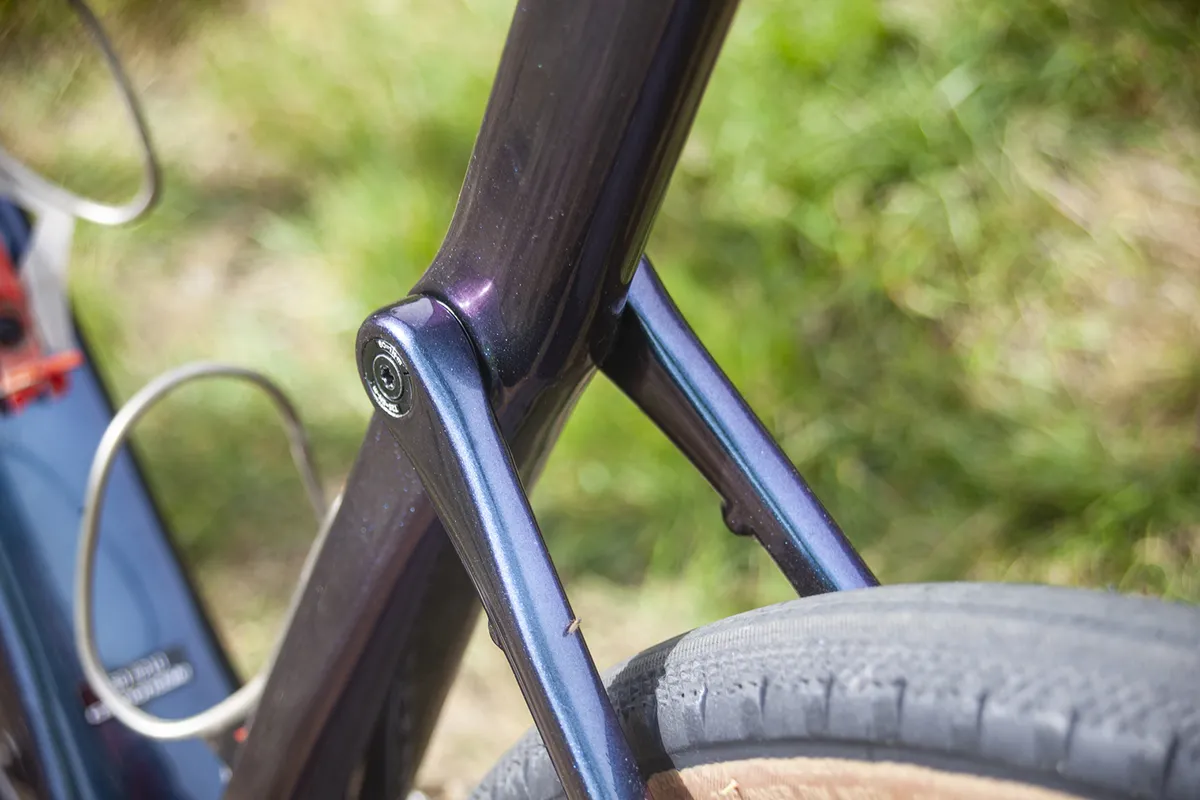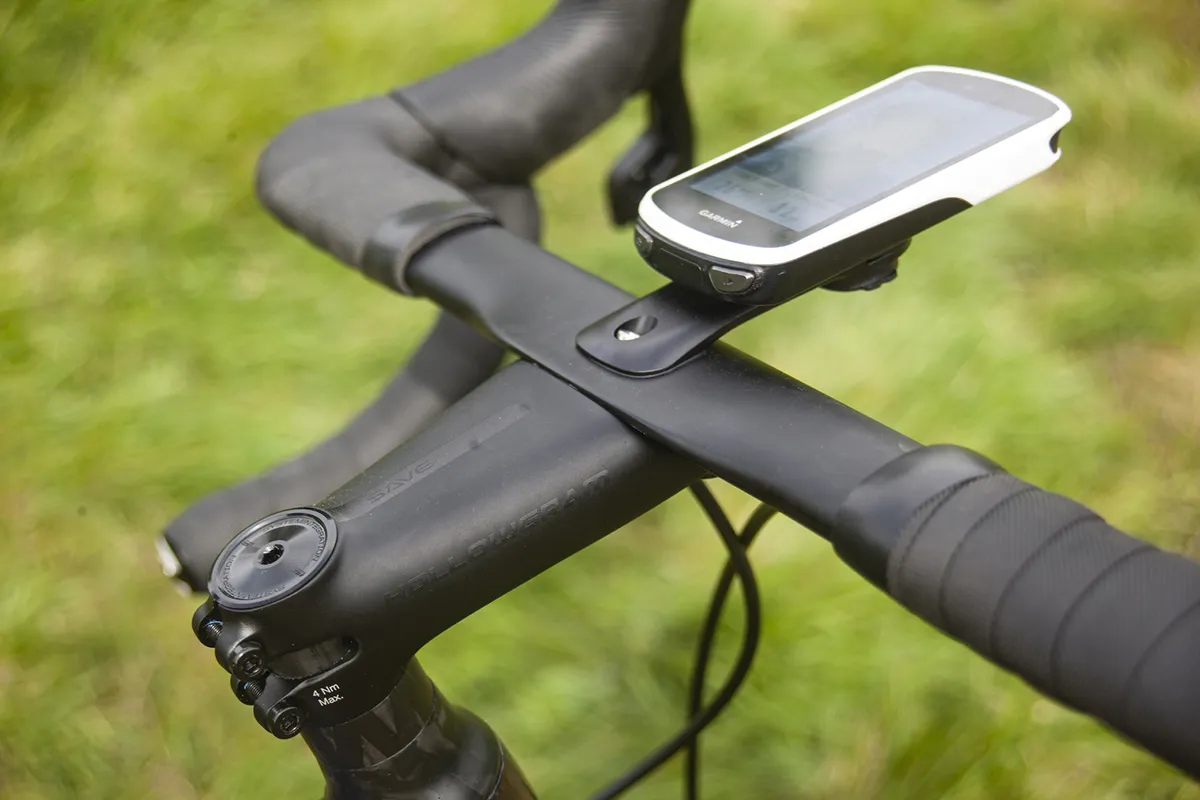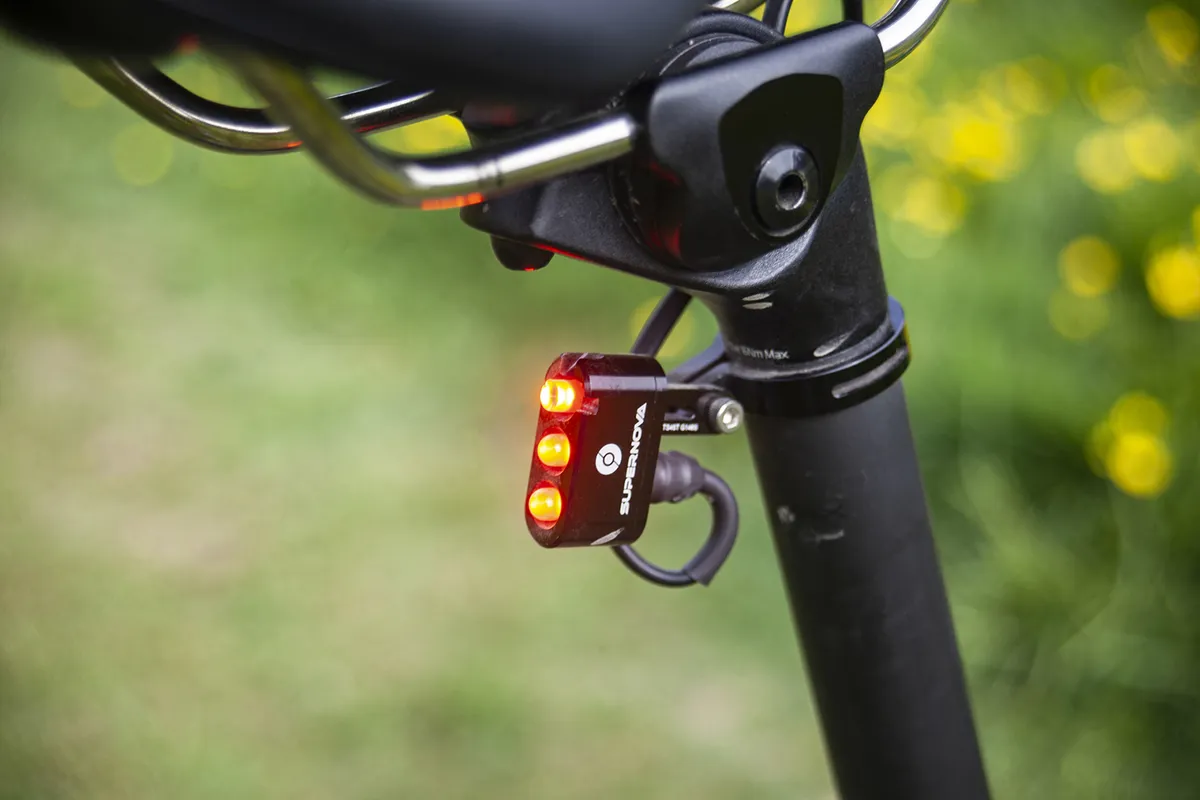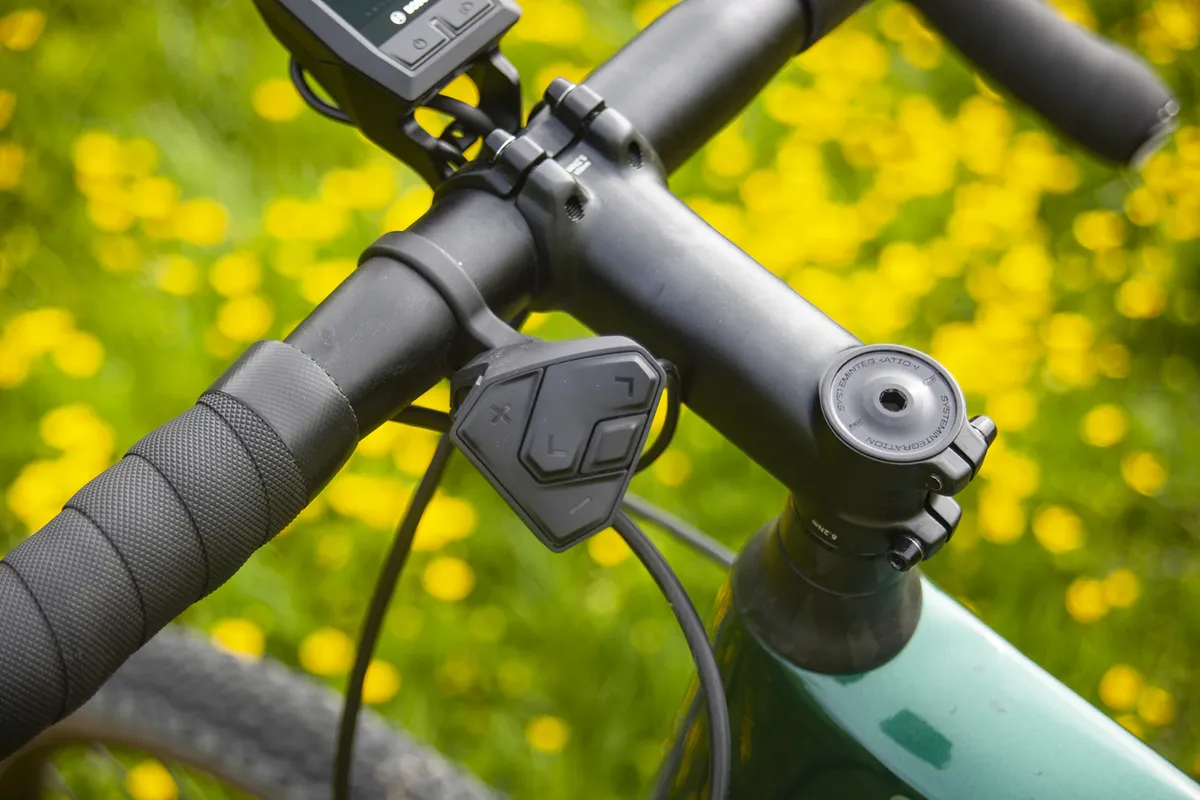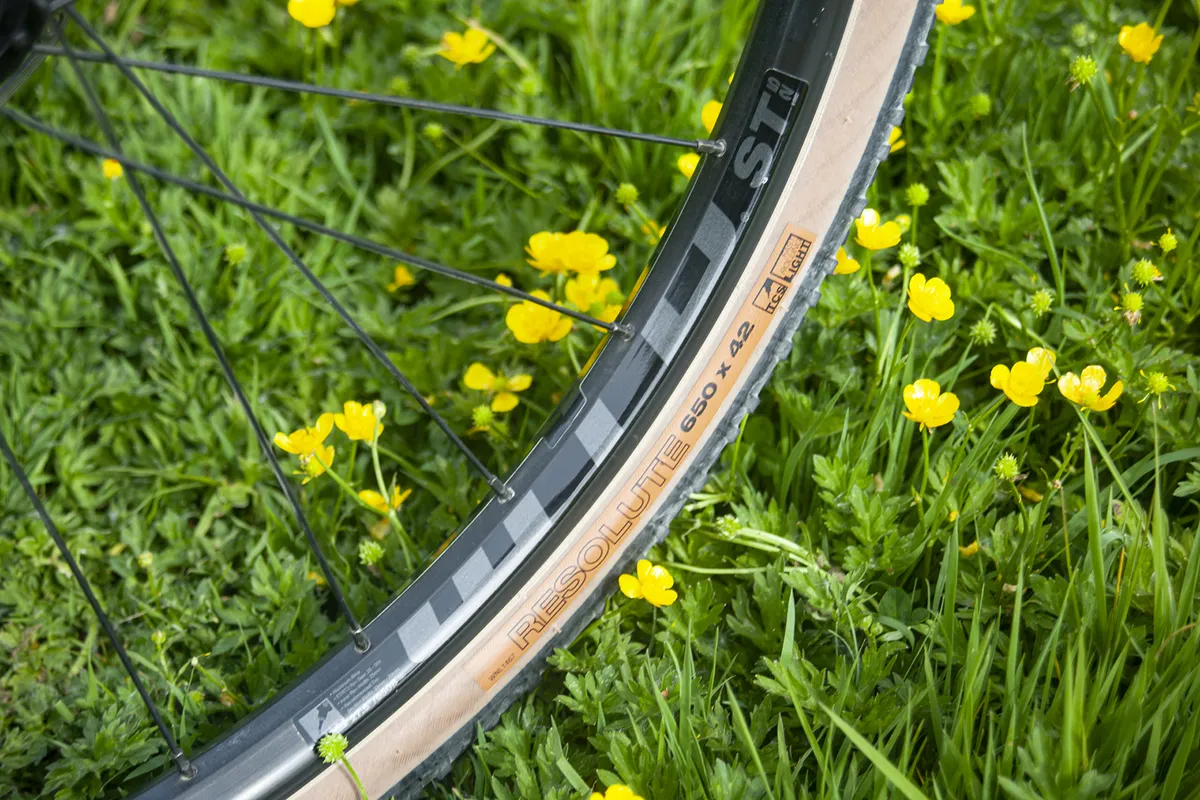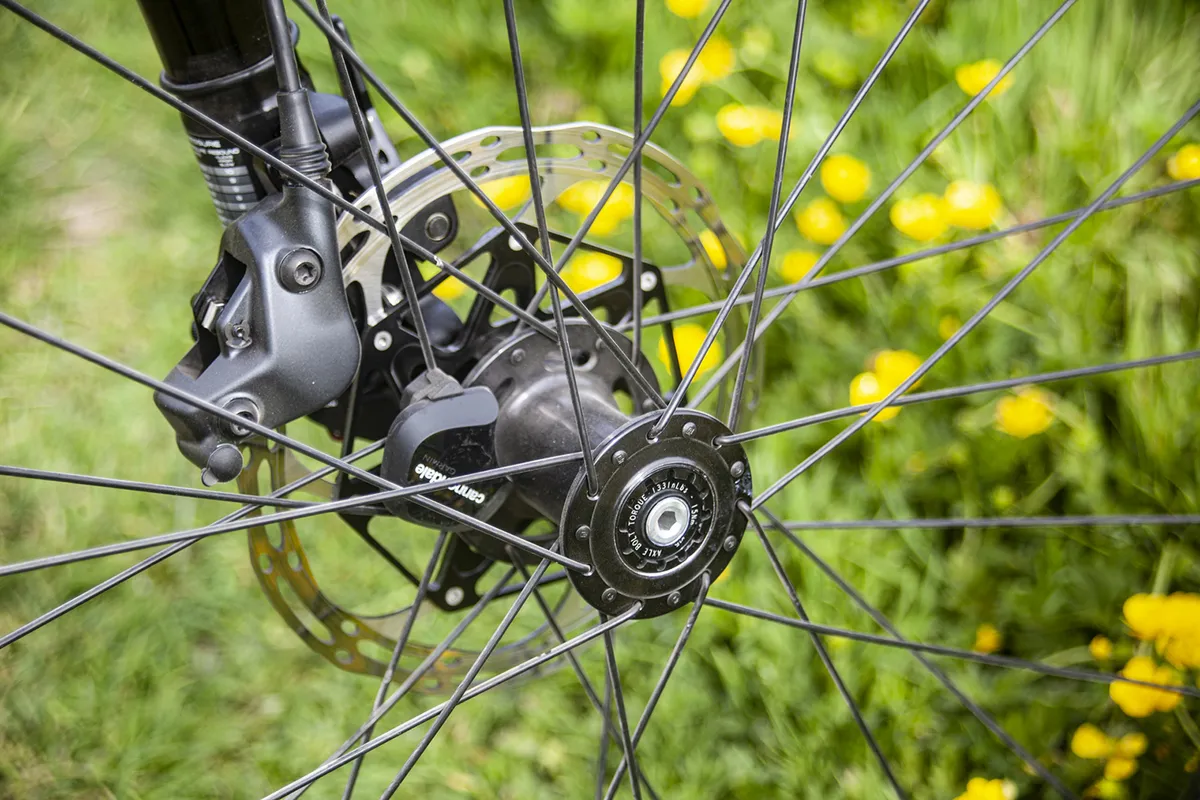Cannondale has reimagined the 2021 Topstone as a full-suspension gravel bike with an all-new Lefty Oliver fork with 30mm of travel, and 650b wheels. And there’s an ebike version, too.
The 2021 Topstone Carbon Lefty combines the Kingpin soft-tail design of the original Topstone Carbon, launched last year, with a completely revamped Lefty Oliver fork inspired by Cannondale’s Lefty Ocho mountain bike fork. You may remember the original Lefty Oliver from the radical Cannondale Slate gravel bike.
Two bikes make up the 2021 Topstone Carbon Lefty range at launch, with prices ranging from £3,399.99 for the Topstone Carbon Lefty 3 (also available in a women’s-specific build) with a mix of Shimano GRX 812/GRX 600 components, to £6,599.99 for the Topstone Carbon Lefty 1 mullet build with SRAM Force and Eagle parts. US prices are to be confirmed.
Cannondale has also launched the Topstone Carbon Neo at the same time. The electric gravel bike comes in two guises: one with the Lefty Oliver fork and 650b wheels, one with a conventional rigid fork and 700c wheels.
Two builds will be available for each, priced between £3,999.99 and £7,999.99.
Natural progression
Cannondale’s Topstone gravel platform saw a major revamp last year with the launch of a carbon fibre model with its Kingpin soft-tail approach to off-road comfort. If you’re not familiar, the Kingpin design is a leaf-sprung rear suspension that provides damping over rough terrain.
At the time, I pondered whether the new Topstone could be further enhanced by the inclusion of Cannondale’s lightweight, single-crown version of the single-sided Lefty fork, the Ocho, which had been launched on the F-Si cross-country race bike.
Well, Cannondale’s engineers were either listening to my post-ride pontifications or, more likely, it’s a natural progression for the Topstone.
Here’s what you need to know about Cannondale’s new full-suspension gravel rig.
Kingpin still rules the roost
First up, the Topstone Lefty features the same frame as last year’s Topstone Carbon debut, which has become one of our favourite gravel bikes of the past 12 months.
That means you get a lightweight (around 1,100g) carbon frame with the unique Kingpin back-end. If you’re already up to speed on the suspension design then skip ahead, but otherwise let’s quickly recap.
The Kingpin suspension offers 30mm of travel, with around 25 per cent of that (7.5mm) at the rear axle, according to Cannondale’s lead suspension engineer, Darius Shekari.
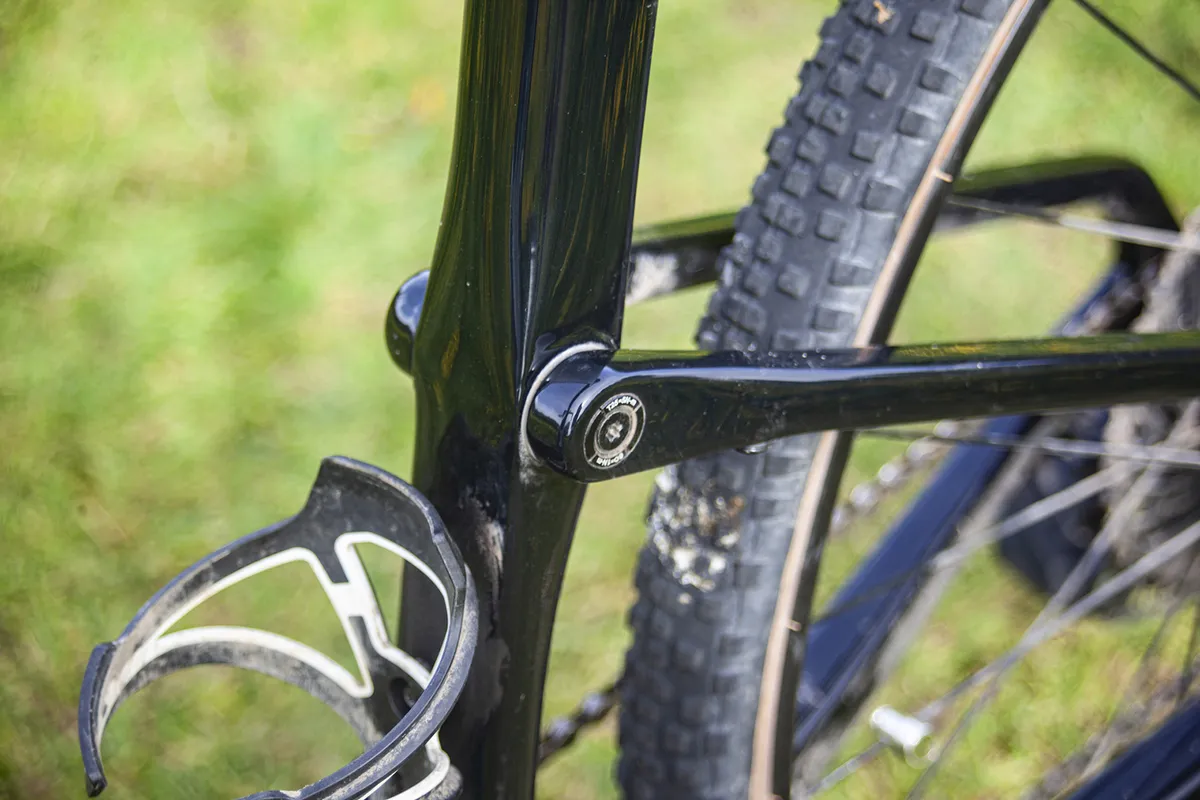
“We’ve engineered the seat tube to work as a leaf-spring, with flex zones in the chainstays and top tube,” Shekari told us at the original Topstone Carbon’s launch.
“The pivot at the top of the seatstays runs on a maintenance-free bearing allowing this level of movement without the complexity or additional weight of a shock unit and linkages.”
The leaf-spring design is proportional to the size of the bike, with the thinnest part of the seat tube increasing from 16mm-wide on a small frame to 28mm on an extra-large. Cannondale says the tube cross-sections and laminate design also differ according to the size of the frame, with the aim of providing the same level of stiffness across the board, whatever size the rider.
The Topstone Lefty’s “out-front” geometry is also the same as the Topstone Carbon. Most significantly, that means 55mm of fork offset (the Cannondale Synapse endurance bike uses a 45mm offset).
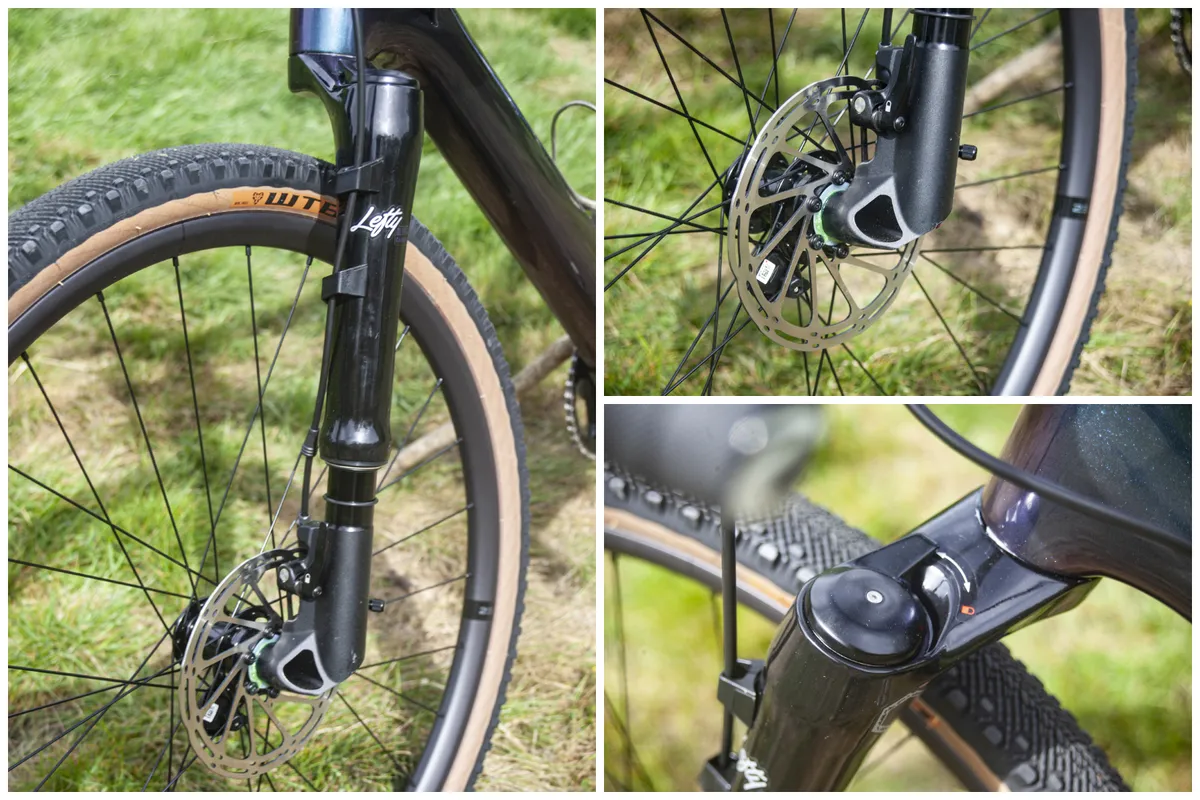
Cannondale claims this keeps the steering light and agile, even with big volume tyres, while adding stability in the rough, and the added benefit of reducing the chance of toe-overlap (where the rear of the front tyre hits your foot when turning tightly).
The Topstone platform is compatible with both 650b and 700c wheel sizes, but the new Lefty-equipped models come with 650b wheels out of the box (unlike the standard Carbon models that stick to the larger 700c standard).
Going with 650s on the Lefty models seems like the smart thing to do. This is the kind of bike that will inevitably take on more extreme ‘gravel’, so taking advantage of larger tyre sizes is the way to go.
All Lefty Carbon bikes come equipped with 47mm, tubeless-ready WTB tyres (Venture TCS Light at the front, Byway TCS Light at the back).
Other frame features include a removable mudguard (fender) bridge on the rear stays, the ability to add an internally-routed 27.2mm dropper seatpost and Cannondale’s Speed Release thru-axles.
Ocho meet Oliver
We’ve reported on the mountain bike Ocho fork at length since its arrival in 2018. That said. Cannondale hasn't simply switched the mountain bike fork over to gravel, it's reworked the design – as was the case with the firm’s first suspended gravel bike, the Slate, and the original Oliver fork.
The Ocho Lefty has been scaled down and pared back to create the new Oliver Lefty – this may be an extreme gravel bike, but it’s not a full-suspension mountain bike – and as such the weight drops from 1,446g to a claimed 1,340g for the carbon version of the fork (carbon crown, steerer and upper legs).
There’s also an aluminium version of the fork, which drops in weight from 1,735g to 1,610g. Both forks have the same alloy lower leg assembly and stub axle.
It’s interesting that Cannondale is rolling the fork tech down to alloy levels because the big criticism of the original Slate was its elevated price for what was an aluminium-framed bike – the result of the added cost of a very expensive carbon fibre Lefty fork.
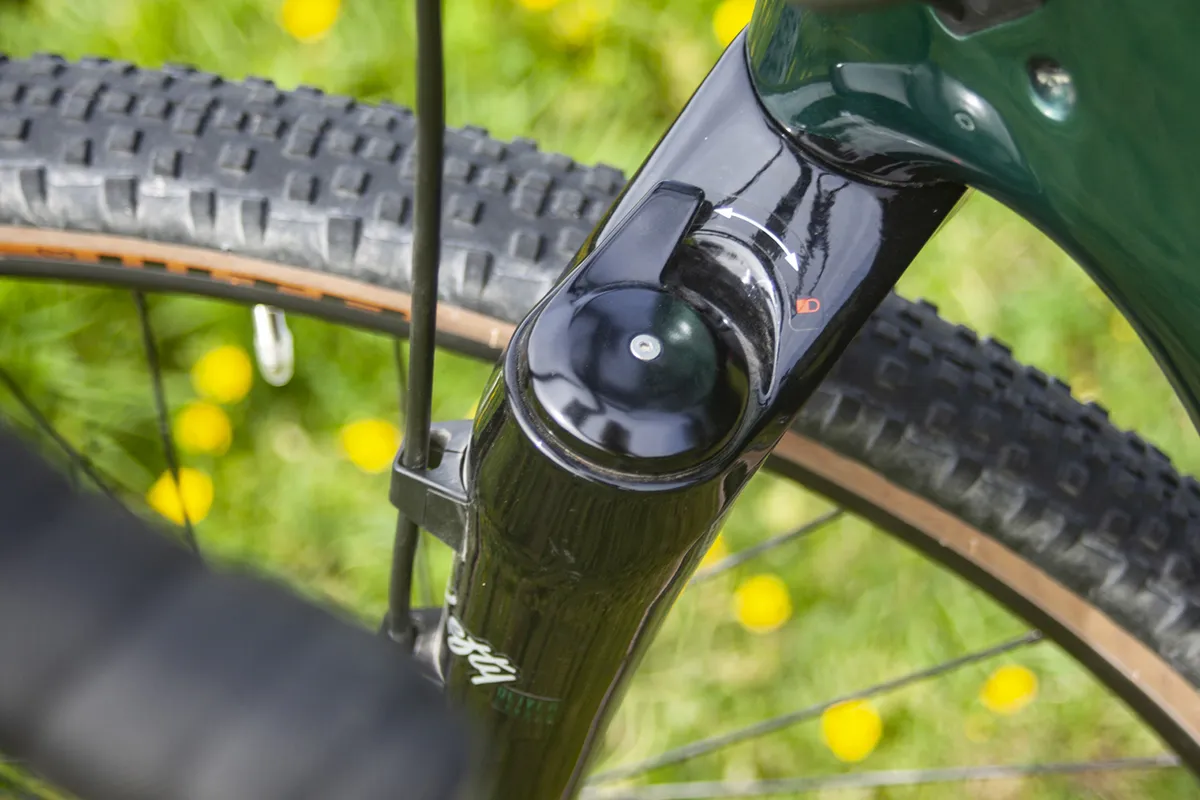
The reshaped single-crown allows for 47mm tyres with 650b wheels (or 45mm with 700c) and offers 30mm of travel to match the Kingpin rear suspension.
Cannondale says the Oliver Lefty retains the same high-levels of lateral and fore-and-aft stiffness as the mountain bike fork, which has a reputation for stiffness, especially in its shorter travel iterations.
Internally the Lefty Oliver uses the same ‘Delta Cage’ needle bearing system, where the three roller bearing assemblies are held in a lightweight polymer cage. This means the three bearing sets move in unison and can’t work against each other, which Cannondale says significantly reduces friction.
In practice, Cannondale claims this results in a fork that won’t bind under load and offers better bump performance (the speed and rate at which it reacts to rough surfaces) – better than any comparable system on the market, according to Cannondale.
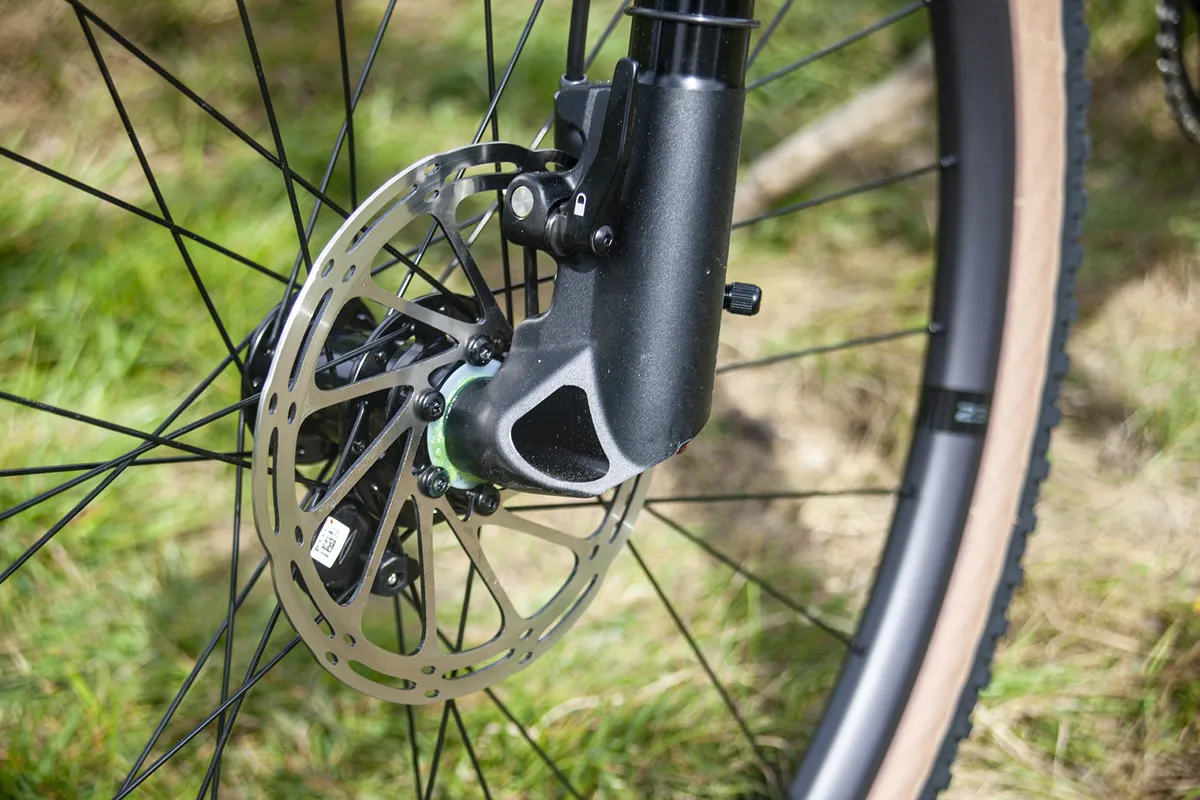
We don’t know exactly what Cannondale is comparing the Lefty Oliver to, but other gravel-focused suspension systems include the Specialized Diverge’s Futureshock, Lauf’s Grit fork, Fox’s AX and the Redshift Shockstop stem.
Cannondale’s engineers tell us they’ve done a lot of work on controlling the fork to avoid any pedalling-induced ‘bobbing’, claiming that the fork is super-stable under rider input, while remaining very open on hits.
The rebound adjustment is isolated from compression and they claim the new Oliver offers 60 per cent more rebound range than the original Oliver from the Slate.
Even with the claimed improvements in control, they’ve still included a manual lock-out lever on the crown, for extended sections riding on the road. The lock-out is designed to ‘blow-off’ should you hit any obstacle (or, more likely, forget to switch to active when you move between road and rough).
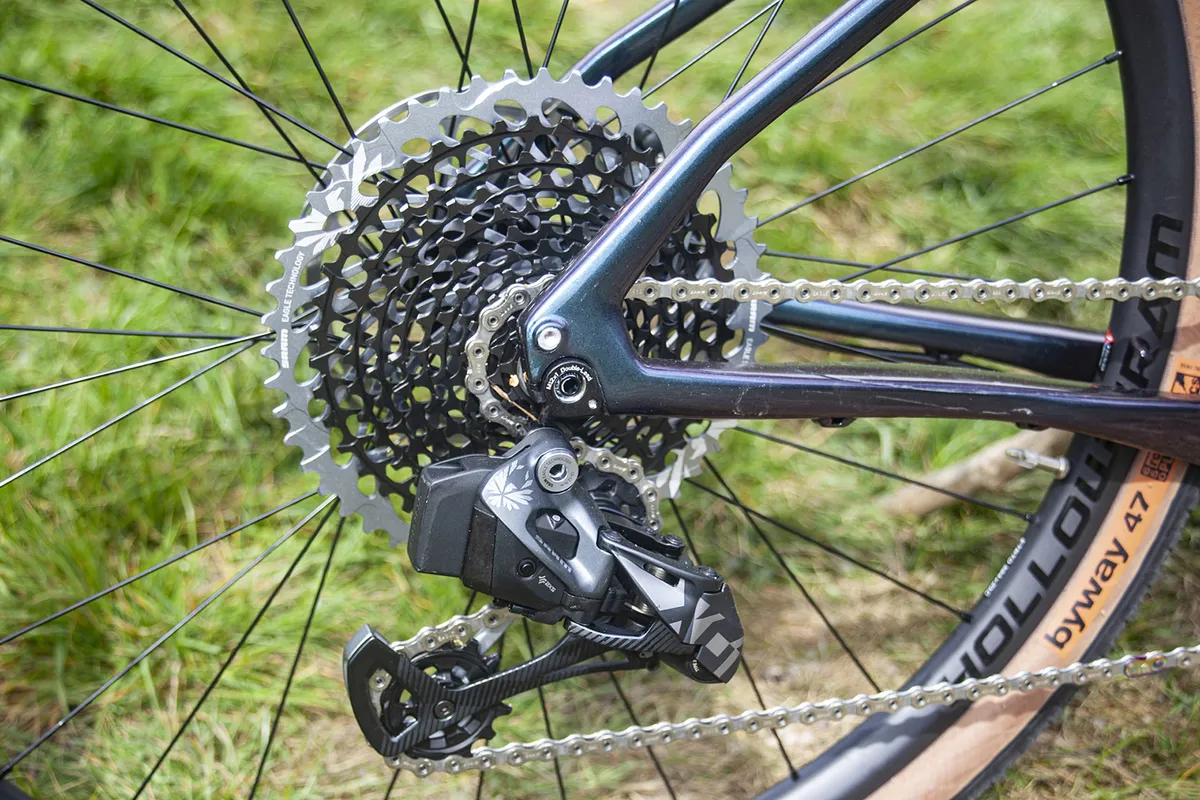
For wheel maintenance the Oliver also has a quick release system to remove the flat-mount brake caliper assembly (don’t worry, it has a very secure locking mechanism when you replace it).
That said, experience shows that, with the fork being single-sided, you rarely need to remove the wheel for switching tyres or puncture repairs. Only when it comes to brake maintenance/pad replacement (or serious wheel issues) will you need to take it apart.
The Ocho Lefty is also able to slot into the existing Topstone frame, thanks to the new design being based around a (much more standard) 1-1/8in to 1.5in tapered steerer, rather than the proprietary steerer diameter on Slate’s Oliver.
The Carbon fork will cost $1,500 (UK price TBC), but there will be the added expense of a new front wheel, too.
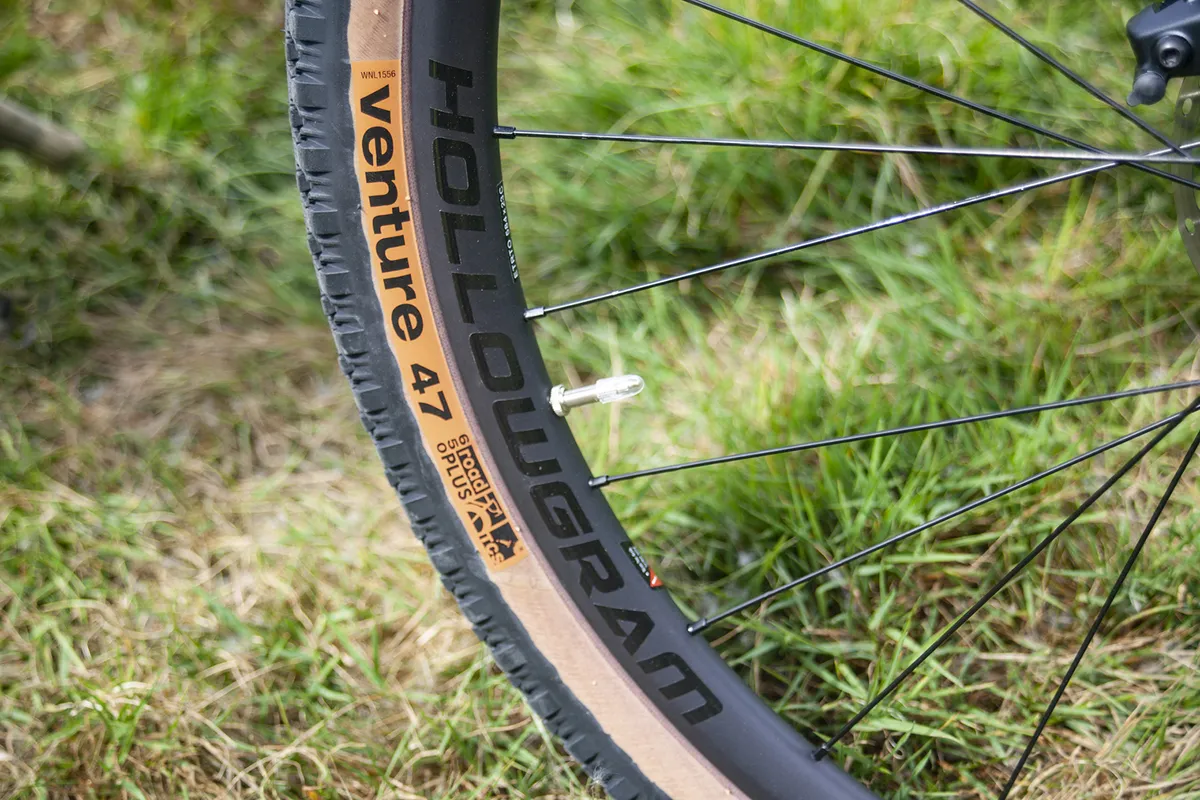
We have currently paused our bike testing schedule due to the coronavirus crisis, but I have the flagship Topstone Carbon Lefty 1 here and ready to ride, so will report back as soon as I can.
Full specs for the Lefty range are at the end of this article but the flagship Topstone Carbon Lefty 1 comes with a mullet mix of SRAM Force AXS and XO Eagle components (pairing a 40t chainring with a 10-50t cassette), the Save bar and stem from the Cannondale SuperSix EVO, Cannondale’s tubeless 650b carbon Hollowgram 23 wheels and a mix of WTB rubber (Byway and Venture). It tips the scales at bang on 10kg in a large.
The only thing I would have liked to see with the Lefty 1 would have been the inclusion of a dropper post (the frame is designed with internally-routed dropper compatibility).
I’ve been riding a dropper on my own gravel machine for a while now and find having that option a big plus when the going gets steep, technical and rough – the kind of terrain this bike will tempt riders towards.
Topstone Neo | Power to go
Alongside the Topstone Lefty comes the Topstone Neo electric gravel bike, which is available in two configurations: a 700c version with a rigid carbon fork, and a 650b version with the new Lefty Oliver.
Whereas the SuperSix EVO Neo uses the ebikemotion hub motor, with its smaller battery and emphasis on low weight (the top-spec bike weighs just 11.3kg), Cannondale has opted for big power on the Topstone Neo in the form of Bosch’s latest Performance Line CX 250-watt motor, with a Bosch Powertube 500wh battery across both models.
That should give plenty of potential for both power and range over lighter assisted options.
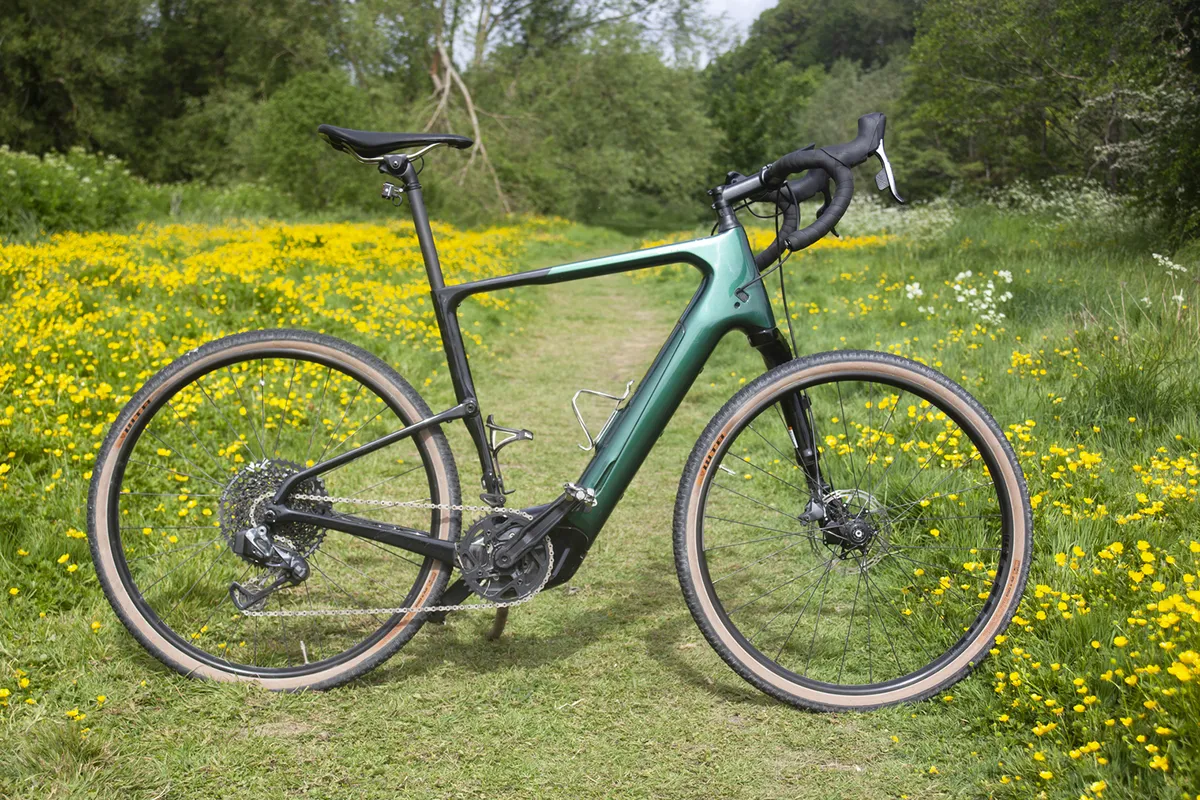
Fork aside, the Topstone Lefty comes across more as an evolution of the Synapse Neo, which if Cannondale was being completely honest was much more of an e-gravel bike than its endurance moniker would suggest.
The frame design follows similar lines as the standard Topstone, with Kingpin suspension at the rear and either the regular carbon fork or a Lefty Oliver providing an additional 30mm of travel up front.
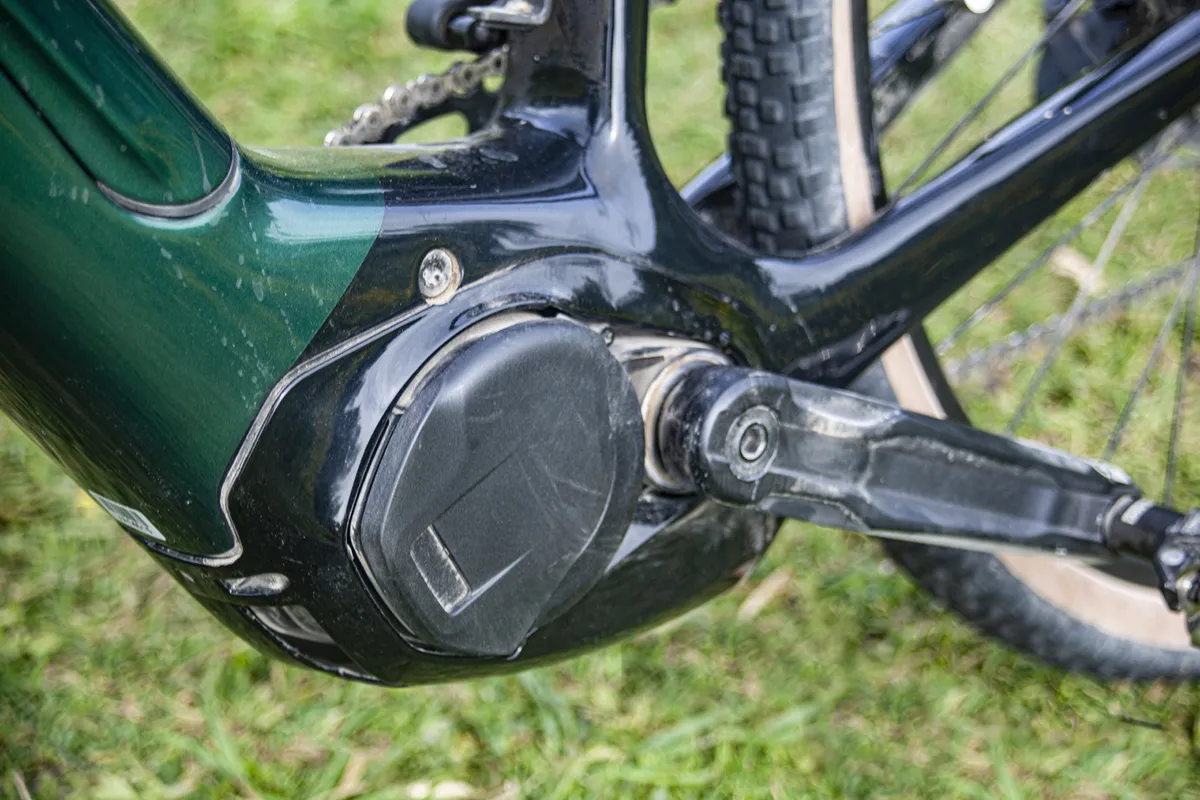
The Neo range consists of four models, with the base model coming with a standard carbon fork, 700c wheels and Tiagra-level Shimano GRX 400, plus Bosch’s Purion display.
Next comes a GRX 600/812 model with an alloy Lefty fork, 650b wheels and the same Bosch Purion display.
Step up again and you get Ultegra-level Shimano GRX 800 components with a 2x drivetrain, rigid carbon fork, 700c wheels and Bosch’s full colour (and more informative) Kiox display, for what looks to be the most ‘all-road’ (rather than pure gravel-focused) bike in the range.
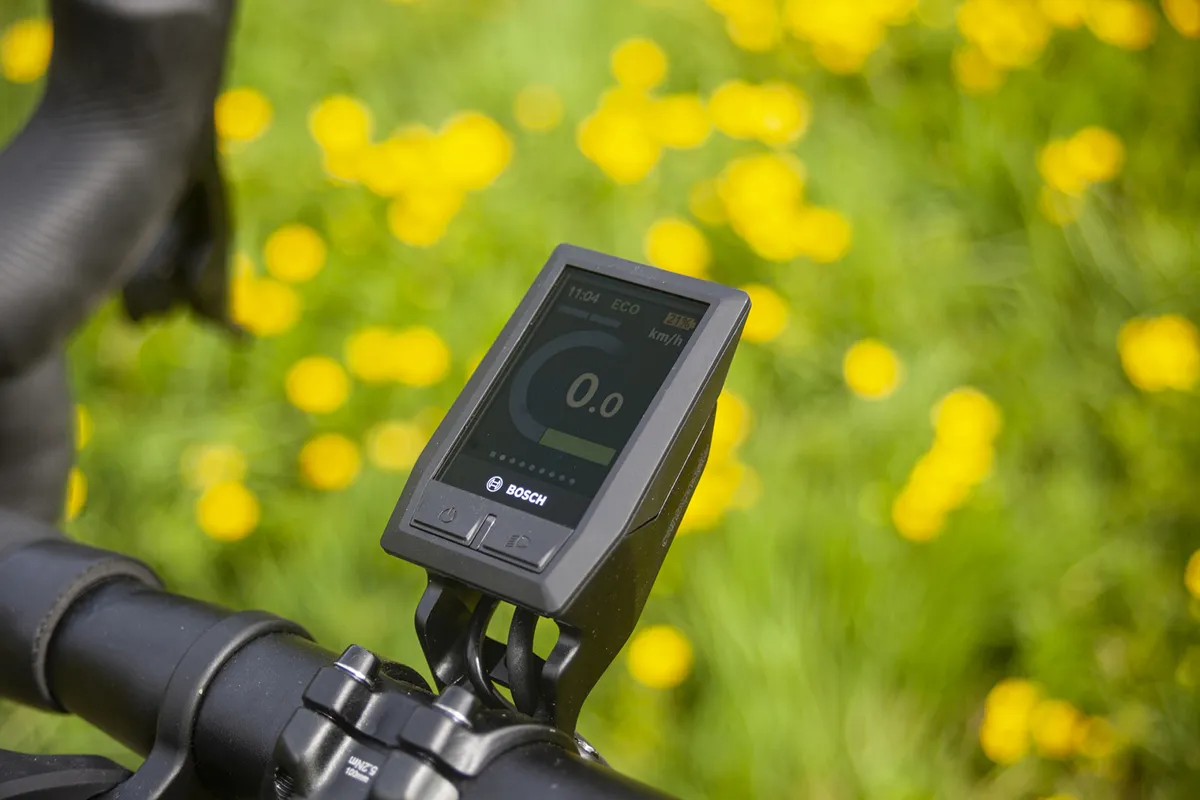
The flagship bike gets the same mullet spec AXS layout as the best of the non-electric Topstone Leftys, with a mix of SRAM Force AXS and XO Eagle components, along with the Bosch Kiox display and controller, 650b wheels and, of course, the new carbon Lefty Oliver fork.
Again, we have the range-topping Cannondale Topstone Lefty Neo 1 charged and ready to go for when testing resumes.
Our large test bike with its SRAM AXS drivetrain, alloy WTB wheels, and an alloy bar and stem weighs in at 17.8kg.
Cannondale Topstone Carbon Lefty 2021 range | Prices and specs
Cannondale Topstone Carbon Women's Lefty 3
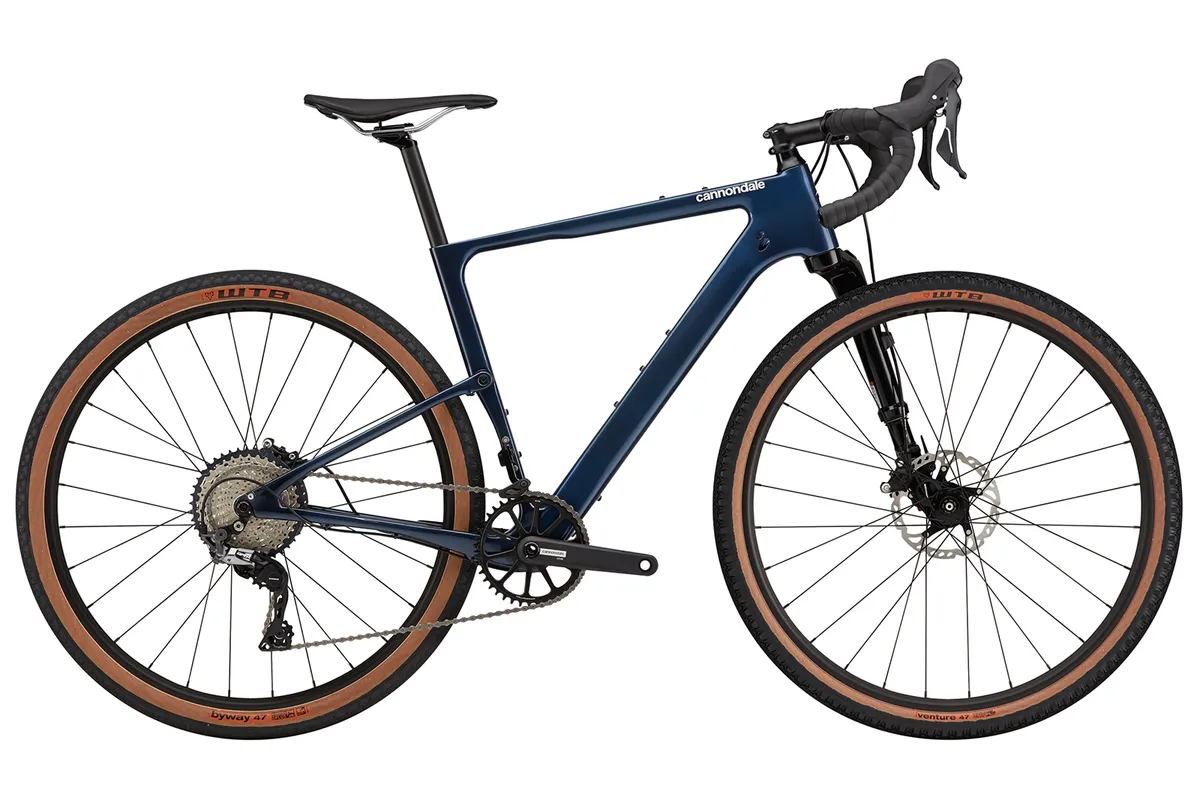
- Frame: Ballistec carbon with Kingpin suspension
- Fork: Lefty Oliver 30mm travel
- Wheels: WTB ST i23 TCS on Lefty 50 hub (f) and Formula DHT-142 rear
- Tyres: WTB Venture TCs Light 650 x 47c front, WTB Byway TCS Light 650 x 47c rear
- Gears: Shimano GRX812/GRX600 (40 x 11-42)
- Brakes: Shimano GRX400
- Price: £3,399 / $TBC / €3,799
Cannondale Topstone Carbon Lefty 3
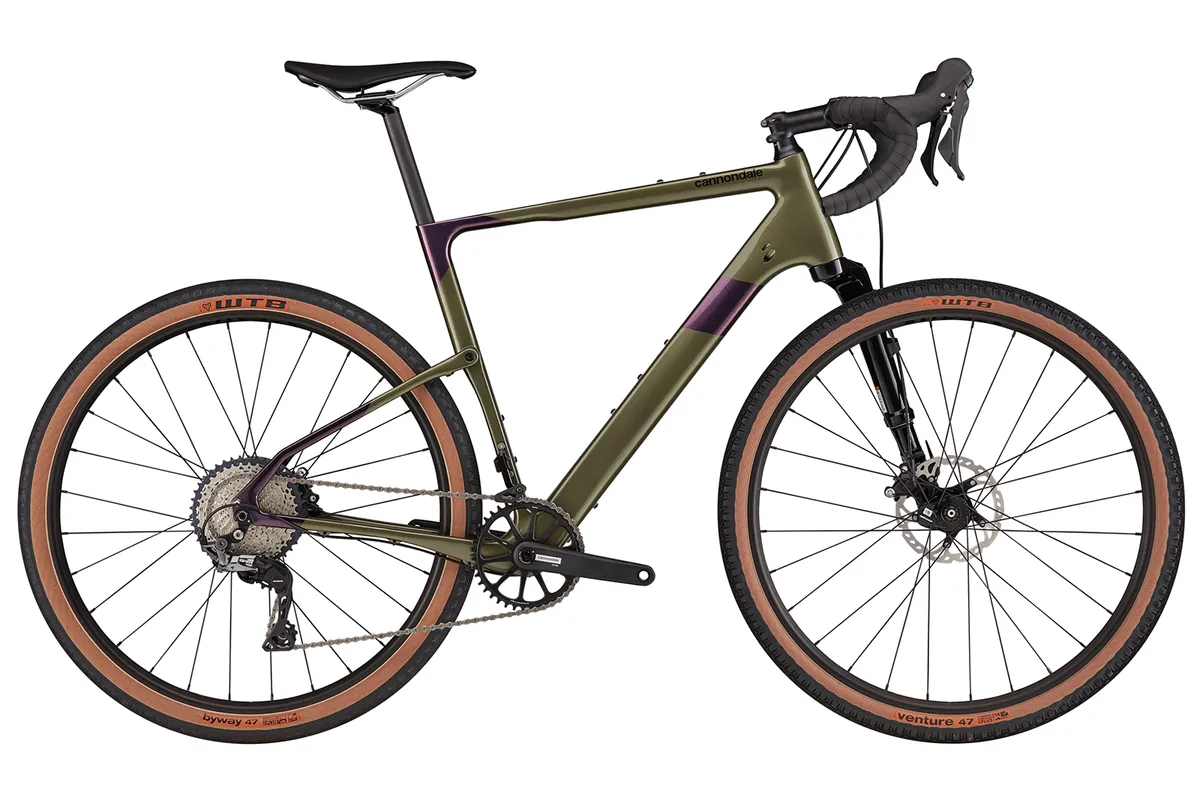
- Frame: Ballistec carbon with Kingpin suspension
- Fork: Lefty Oliver 30mm travel
- Wheels: WTB ST i23 TCS on Lefty 50 hub (f) and Formula DHT-142 rear
- Tyres: WTB Venture TCs Light 650 x 47c front, WTB Byway TCS Light 650 x 47c rear
- Gears: Shimano GRX812/GRX600 (40 x 11-42)
- Brakes: Shimano GRX400
- Price: £3,399.99 / $TBC / €3,799
Cannondale Topstone Carbon Lefty 1
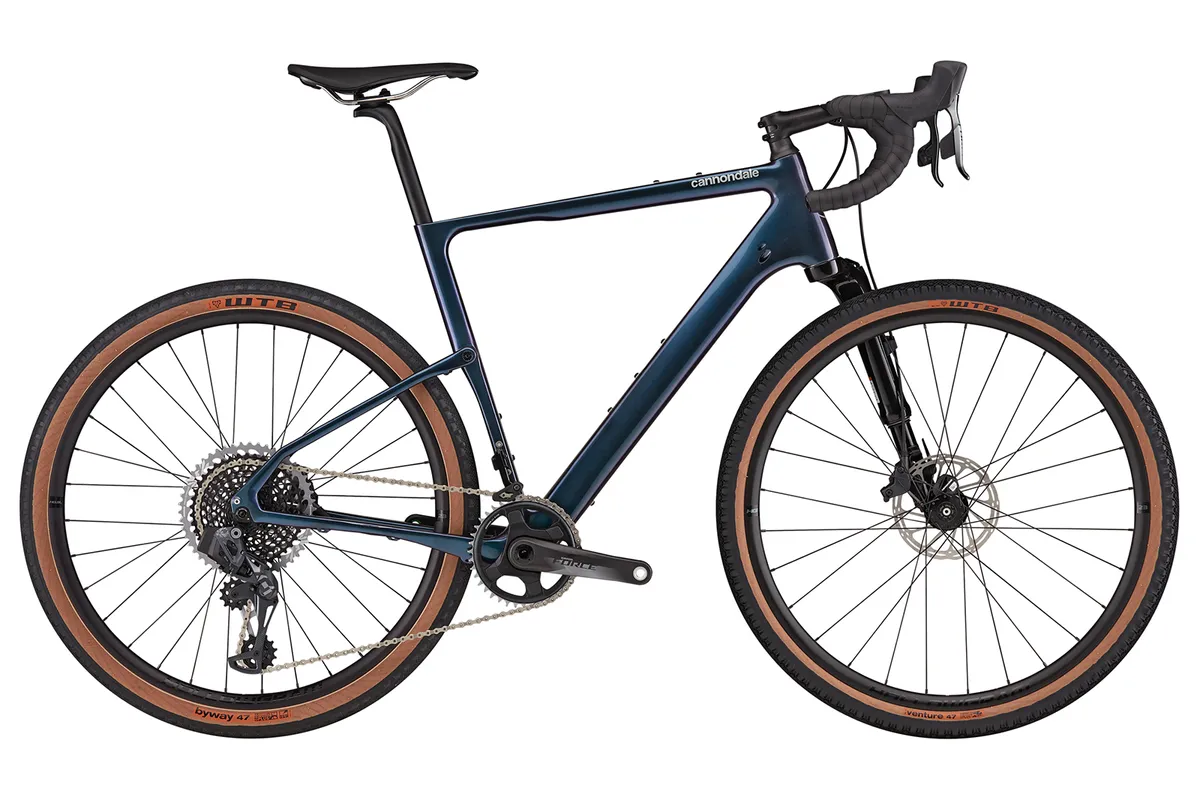
- Frame: Ballistec carbon with Kingpin suspension
- Fork: Lefty Oliver carbon 30mm travel
- Wheels: Cannondale Hollowgram 23 superlight hi-impact carbon (23mm internal) tubeless
- Tyres: WTB Venture TCs Light 650 x 47c front, WTB Byway TCS Light 650 x 47c rear
- Gears: SRAM Force AXS shifters, Eagle X01 rear mech and cassette (40, 10-50)
- Price: £6,599.99 / $TBC / €7,499
Cannondale Topstone Neo 2021 range | Prices and specs
Cannondale Topstone Neo Carbon 4
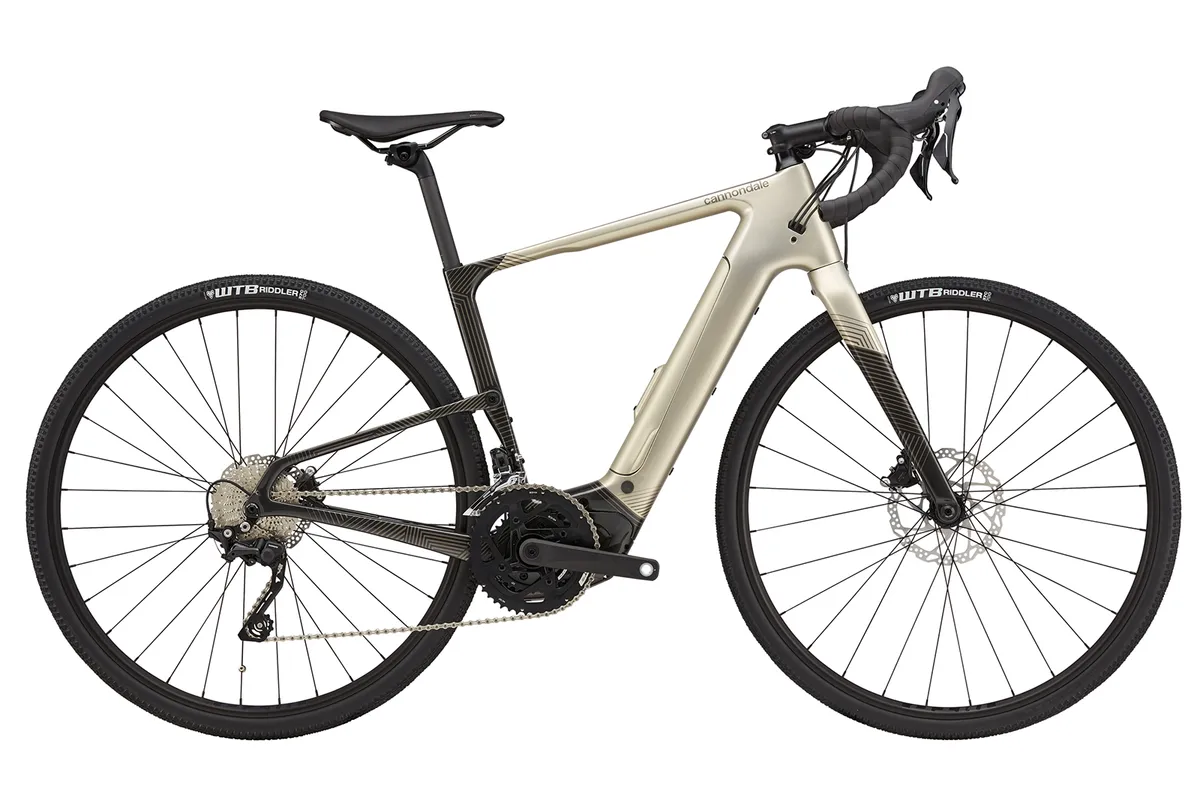
- Frame: Ballistec carbon with Kingpin suspension, 12 x 148 thru-axle, removable down tube battery
- Fork: Ballistec carbon, 12 x 110mm
- E-assist: Bosch Performance Line CX 250w
- Battery: Bosch Powertube 500x
- Display: Bosch Purion
- Wheels: WTB ST TCS i23 on Formula (F) and Shimano (R) hubs
- Tyres: WTB Riddler Comp 700 x 37c
- Gears: Shimano GRX 400 (48/32, 11-34)
- Brakes: Shimano GRX
- Price: £3,999.99 / $TBC / €4,499
Cannondale Topstone Neo Carbon 3 Lefty
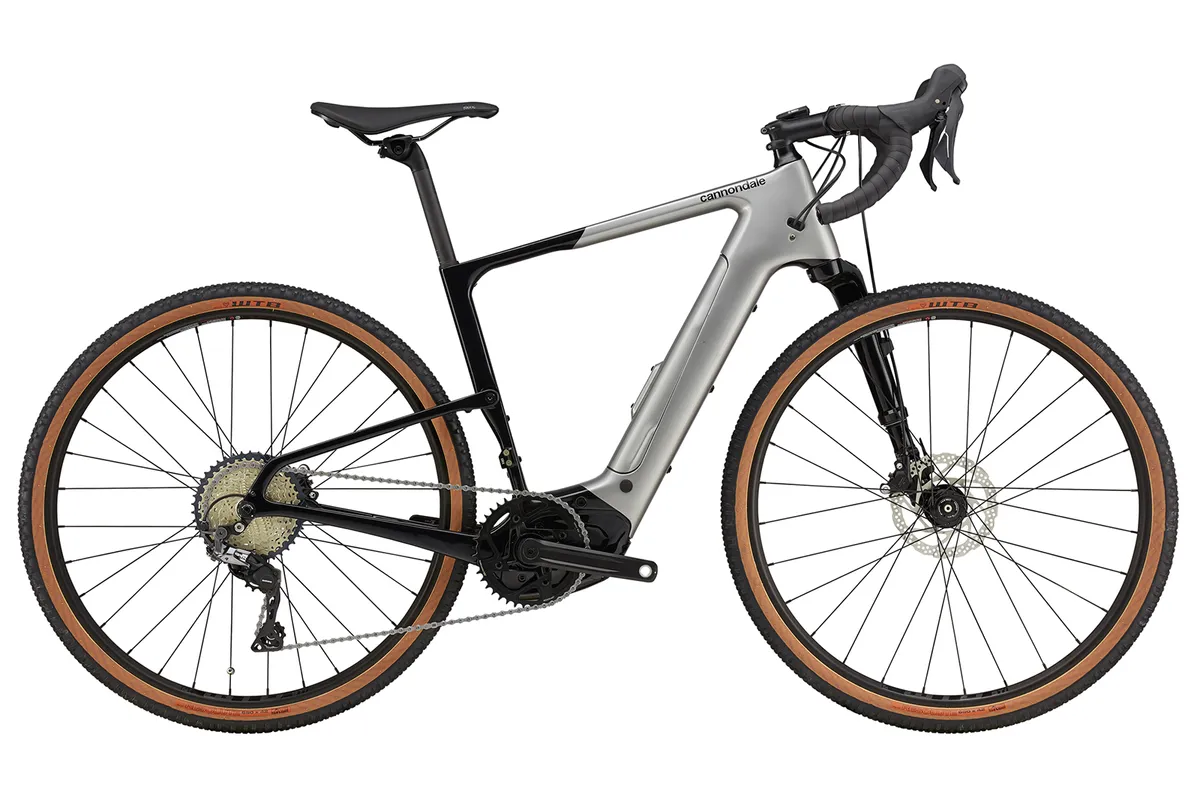
- Frame: Ballistec carbon with Kingpin suspension, 12 x 148 thru-axle, removable down tube battery
- Fork: Lefty Oliver 30mm travel
- E-assist: Bosch Performance Line CX 250w
- Battery: Bosch Powertube 500x
- Display: Bosch Purion
- Wheels: WTB ST TCS i23 650b rims on Formula hubs
- Tyres: WTB Resolute 650b x 42c tubeless-ready
- Gears: Shimano GRX600/812 (42 x 11-42)
- Brakes: Shimano GRX
- Price: £4,999.99 / $TBC / €5,799
Cannondale Topstone Neo Carbon 2
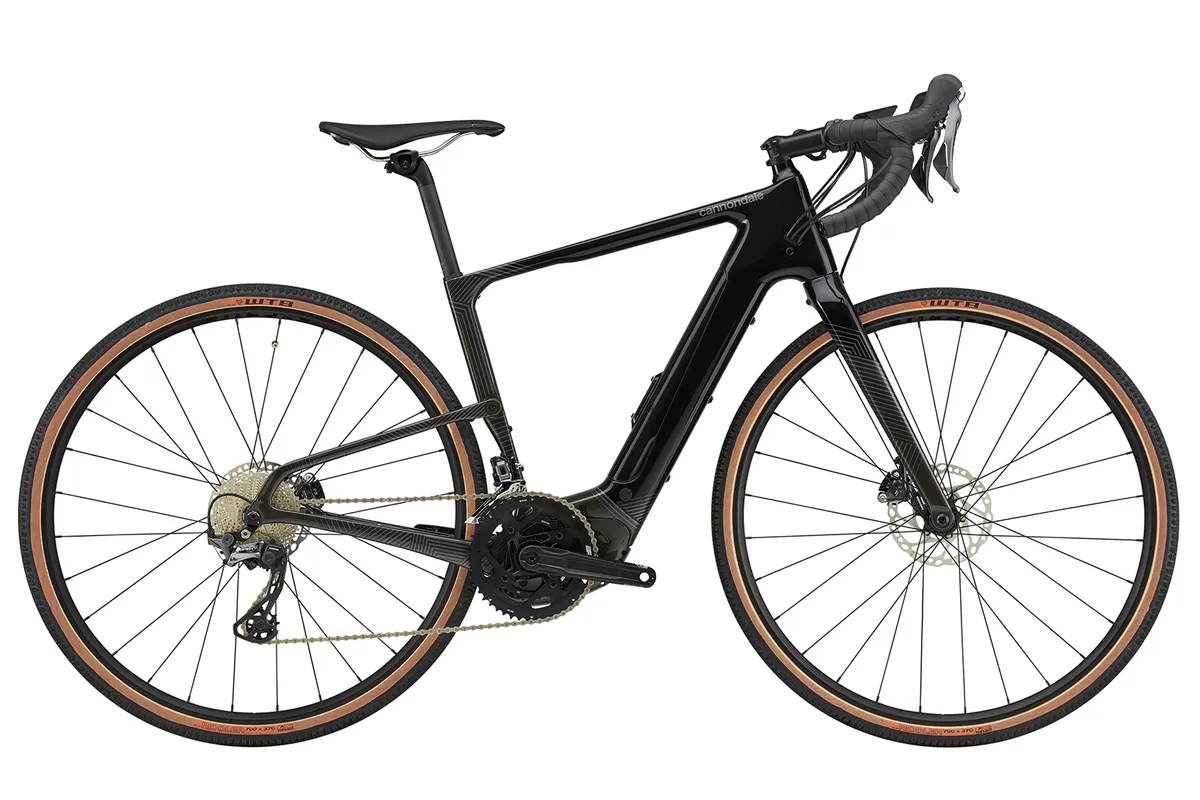
- Frame: Ballistec carbon with Kingpin suspension, 12 x 148 thru-axle, removable down tube battery
- Fork: Ballistec carbon, 12 x 110mm
- E-assist: Bosch Performance Line CX 250w
- Battery: Bosch Powertube 500x
- Display: Bosch Kiox
- Wheels: WTB KOM Light i23 TCS on Formula hubs
- Tyres: WTB Riddler TCS Light 700 x 37c
- Gears: Shimano GRX 800 (48/32, 11-34)
- Brakes: Shimano GRX
- Price: £5,499.99 / $TBC / €6,299
Cannondale Topstone Neo Carbon 1 Lefty
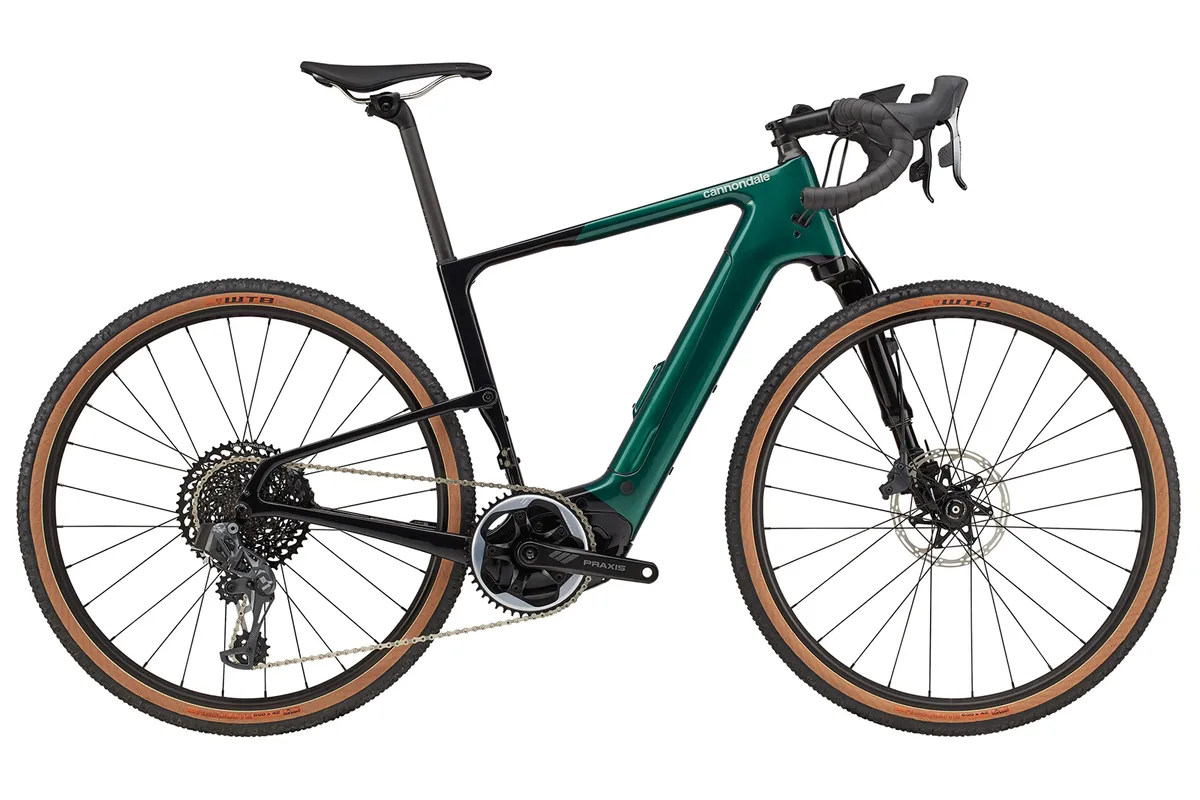
- Frame: Ballistec carbon with Kingpin suspension, 12 x 148 thru-axle, removable down tube battery
- Fork: Lefty Oliver carbon 30mm travel
- E-assist: Bosch Performance Line CX 250w
- Battery: Bosch Powertube 500x
- Display: Bosch Kiox
- Wheels: WTB ST i25 TCS on Formula hubs
- Tyres: WTB Resolute 650b x 42c
- Gears: SRAM Force AXS shifters with SRAM Eagle XO mech (44, 10-50)
- Brakes: SRAM Force
- Price: £7,999.99 / $TBC / €8,999
